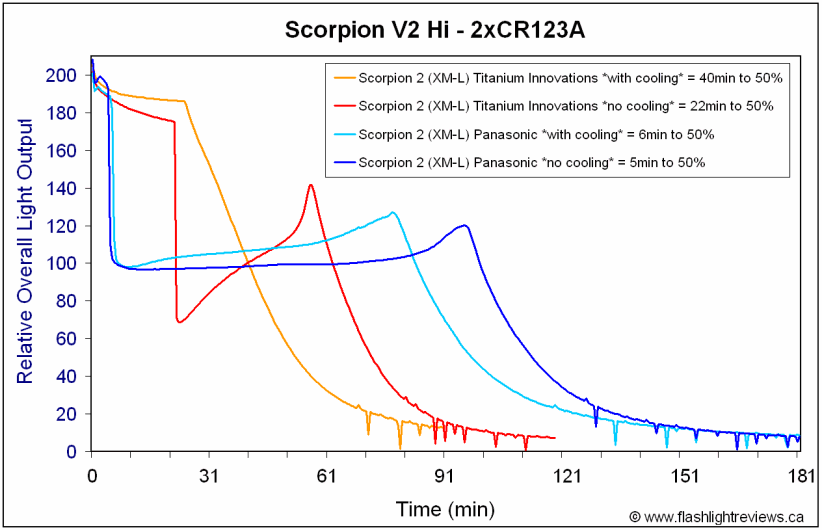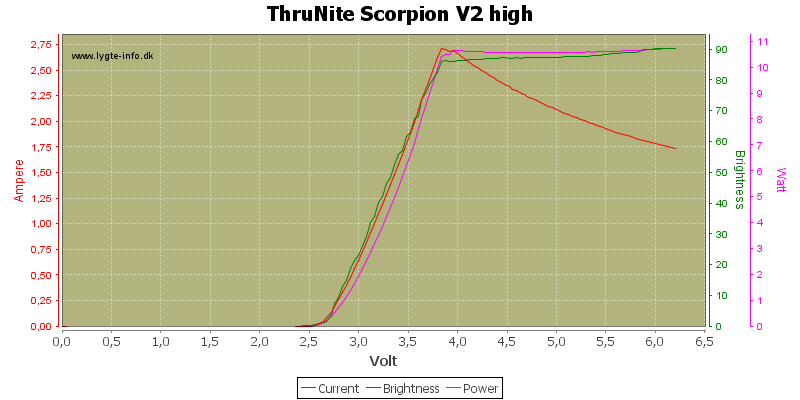candle lamp
Flashlight Enthusiast
You are correct, the V2 also has a o-ring there, I have adjusted the review text.
This light must be using some sort of magic with the tailcap. I can not see more than two connection (Battery and tube), but it does not work if I move the tailcap 4 cm away with extension wires?
Good for you!
When I first saw the tailcap, I was wondering what is in there at all.
Really hope you find the current draw on batteries at tailcap. Keep your engines high!
Ok, here are my results on 2xCR123A on max, on Titanium Innovations CR123As and Panasonic made-in-USA CR123As, with and without external cooling:

As you can see, cooling didn't make much of a difference on the Panasonic runs - I got ~5 mins to step down without it, and ~6 mins with it.The only real difference cooling seems to make is in the rate of the recovery phase.
So it seems the Panasonic cells can't handle the current load and heat up faster than the Titanium Innovations cells. This is turn either triggers some sort of stepdown circuit/resistor, or causes some sort of battery hiccup.
Interesting .... I've just posted a synopsis of the situation in the batteries/electronics forum. Let's see what the experts there think!
Judging from the above graph, perhaps Selfbuilt could see flickerings for low voltage warning of 2xCR123A cells.
( Maybe it was a just because of circuit? )
I'm still wondering why there is no warning(flickering) in case of 2xIMR16340 cells. There is no sign such as flickerings like CR123As.:thinking:
Last edited:






